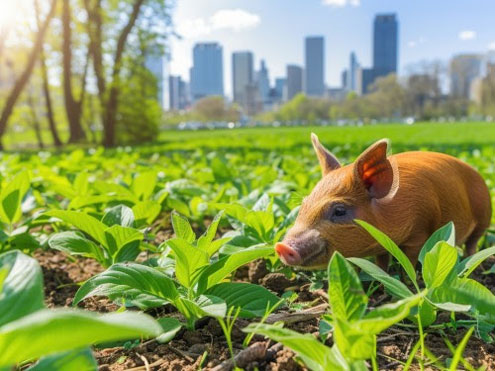Columbus, Ohio — A trio of researchers from The Ohio State University College of Food, Agricultural, and Environmental Sciences (CFAES) has conducted an in-depth analysis of Ohio’s declining agricultural land, providing new insights into the forces driving this trend and its implications for the future of farming in the state.
Ani Katchova, professor and Farm Income Enhancement Endowed Chair in Agricultural Policy, Trade, and Marketing with the CFAES Department of Agricultural, Environmental, and Development Economics (AEDE), Carl Zulauf, professor emeritus, and Mujahidul Islam, a CFAES PhD student, led the study, which examines the conversion of agricultural land into developed areas.

The report findings have significant implications for land-use policies as urban development increasingly encroaches on Ohio’s rural areas.
“Since 2001, Ohio has lost 268,430 acres of agricultural land, a decline of 2.04%,” Katchova said. “While much of the focus has been on development, it’s important to note that development accounts for only half of this land loss.”
The research found that nearly half (48%) of the agricultural land lost during this period was converted to developed land, with Ohio’s 14 metropolitan statistical areas (MSAs) — including major cities such as Columbus, Cincinnati, and Cleveland — accounting for the majority of the losses. These cities alone were responsible for 78% of the total agricultural land lost to development in the state.
Franklin and Delaware counties, located within the Columbus MSA, saw the most significant losses, with 13,170 and 9,547 acres converted, respectively. In the city of Columbus alone, 19,670 acres of agricultural land were lost to development within a 3-mile radius of the city boundary.
“The conversion of agricultural land is not just about urban sprawl,” Katchova noted in a recent Ohio Farm Bureau podcast discussing the study. “We also need to consider other factors contributing to this loss, such as shifts in farming practices and land use changes beyond development.”
“This broader understanding is critical for policymakers who need to balance urban growth with farmland preservation.”
The study also found that the rate of agricultural land loss is consistent with trends observed in other Midwest states, where, on average, 55% of lost agricultural land has been converted to development.
However, Ohio’s loss of agricultural land stands out for its concentration in major metropolitan areas.
“As the population continues to grow and urban areas expand, the challenge of preserving farmland becomes more complex,” Katchova said. “Ohio’s agricultural land is a precious resource, and land preservation efforts are needed if there is a desire to protect it.”
Katchova and her team emphasized that land-use policies likely need to be tailored differently for areas inside and outside of MSAs, given the stark differences in land loss patterns. In the Columbus MSA, for example, the pace of agricultural land conversion is significantly higher than in other parts of Ohio.
“This rapid pace of conversion in and around Columbus could have long-term implications for agricultural land loss in the state,” Katchova said. “The needs of preserving agricultural land need to be carefully balanced with the needs to converting agricultural land for development purposes around the major cities in Ohio.”
Implications for the future
Understanding the underlying causes of agricultural land loss is vital for developing effective policies that can both accommodate urban growth and protect Ohio’s agricultural heritage. Katchova’s research also highlights the importance of considering the impact of development on both a local and statewide level, if the current pace of development of Ohio’s farmland continues.
“Given that Ohio’s urban centers are growing rapidly, local governments and policymakers may want to consider strategies that balance farmland conversion with development needs,” Katchova said. “Differential policies and preservation programs may be developed for cities and rural areas based on their different rates of converting agricultural land to developed areas.”

